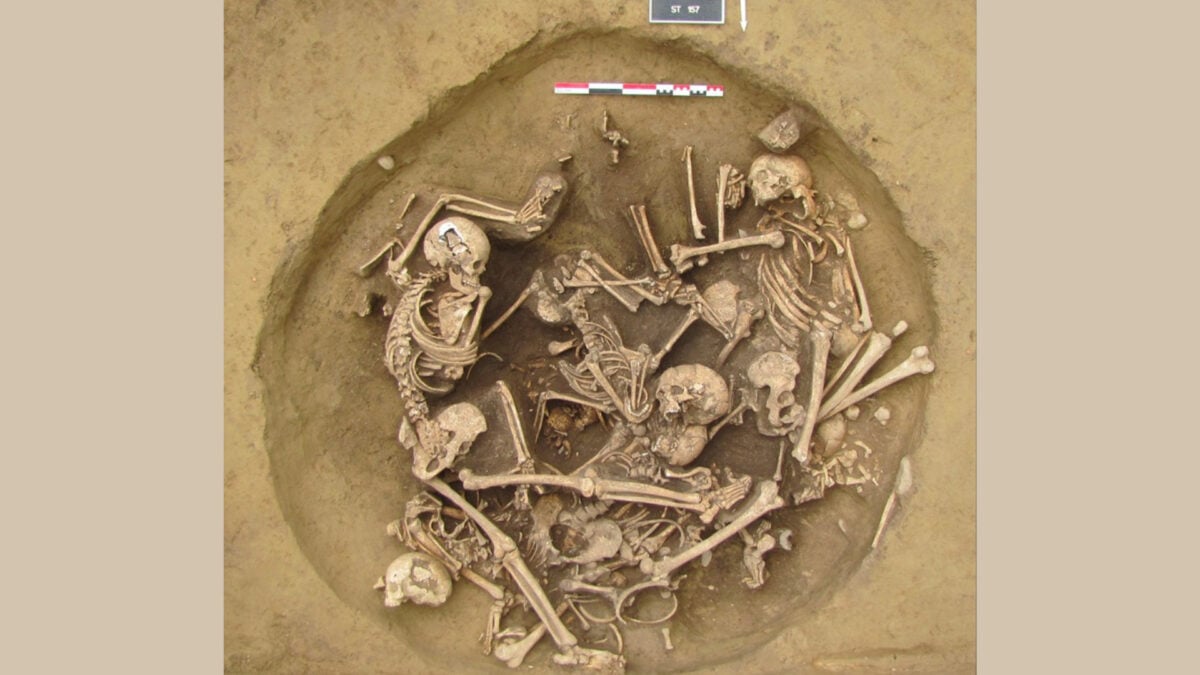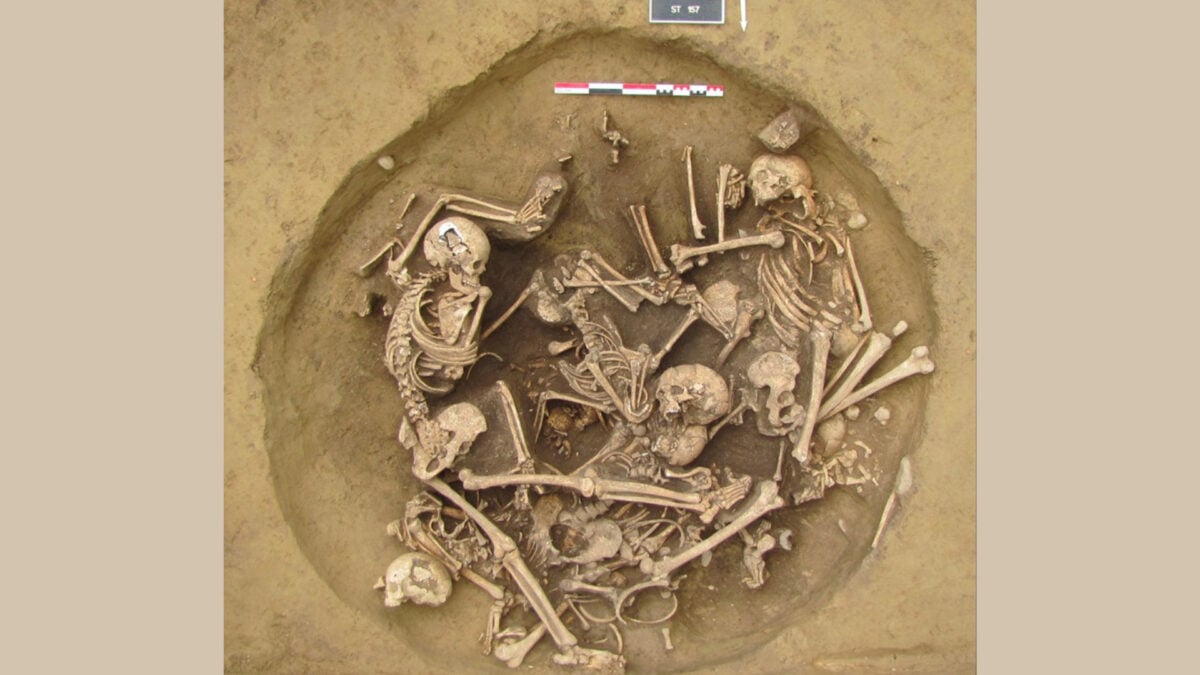Stone Age People Exhibited Brutality Against War Captives: New Findings

In popular imagination, Stone Age communities are often thought of as simple societies, perhaps living in caves or hunting with rudimentary tools. However, the Neolithic era, marking the final phase of the Stone Age (circa 9000 to 3300 BCE), also saw its share of conflict and conquest.
A recent study published in the journal Science Advances indicates that Neolithic inhabitants of northeastern France inflicted brutality on foreign invaders. This might provide evidence of some of the earliest documented victory celebrations tied to warfare.
An international team of researchers examined the remains found in burial pits from two sites near Strasbourg—Achenheim and Bergheim—dating between 4300 and 4150 BCE. They discovered remains of 82 individuals with indicators of violence, including severed limbs.
The analysis suggested that the victims were invading groups, who were killed and possibly displayed in victory rituals by local populations. This could be an early instance of martial victory celebrations in prehistoric Europe.
The region, known for its historical military invasions, previously had research overlooking whether the remains belonged to locals or outsiders. This recent study provides evidence suggesting that those found with unhealed skull fractures and severed limbs were likely foreigners.
Isotopic analysis, which measures variants of elements in skeletal remains, revealed that the non-injured individuals were local inhabitants, while the victims had foreign origins. This supports the idea that these individuals were invaders defeated by the locals.
Ultimately, these findings shed light on how ancient societies might have perceived and treated those they deemed enemies, viewing them potentially as trophies rather than equals. The brutal treatment of these captives highlights a history of violence and victory celebration in the Stone Age.

